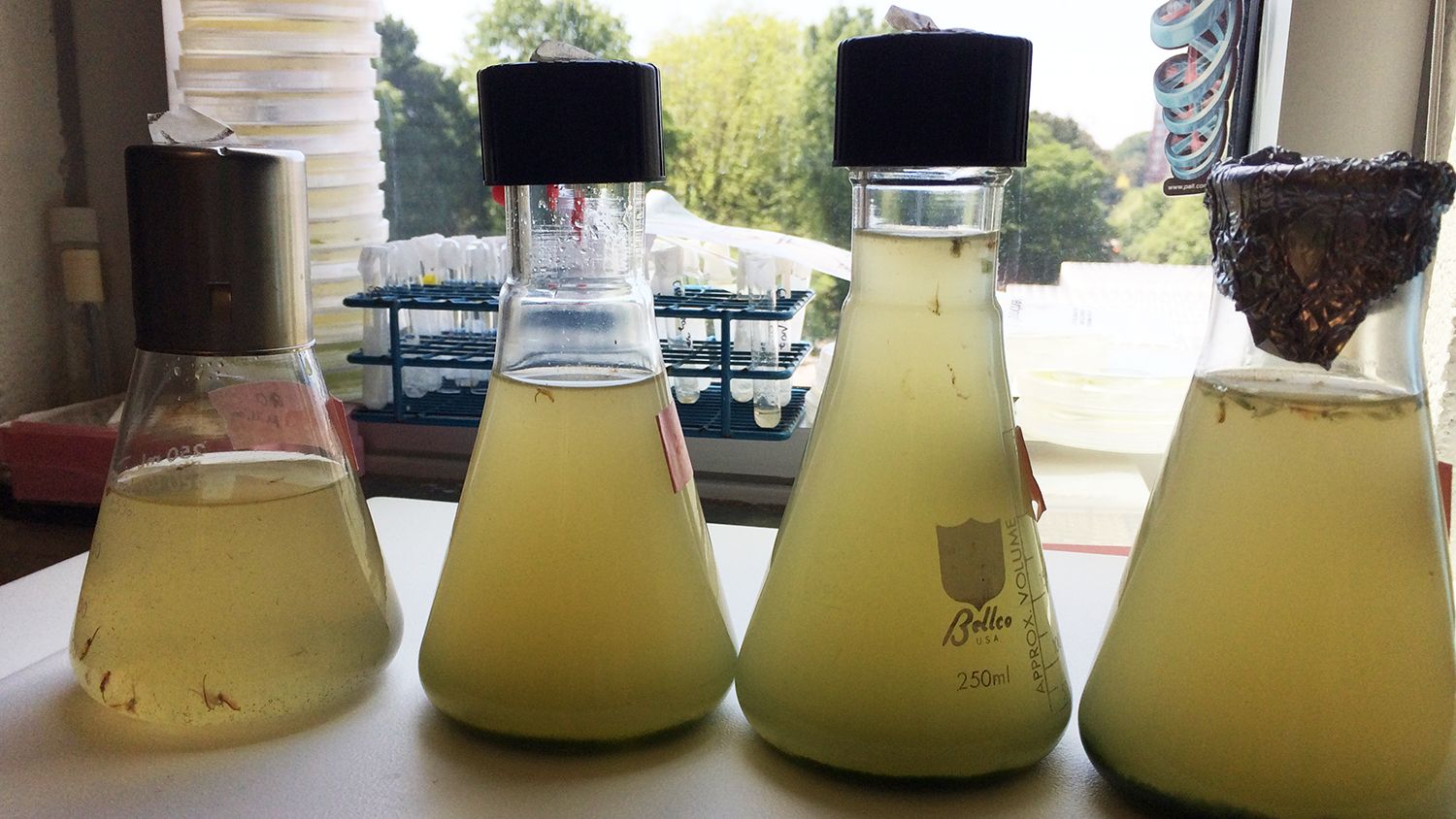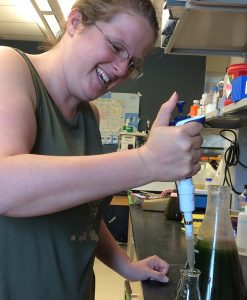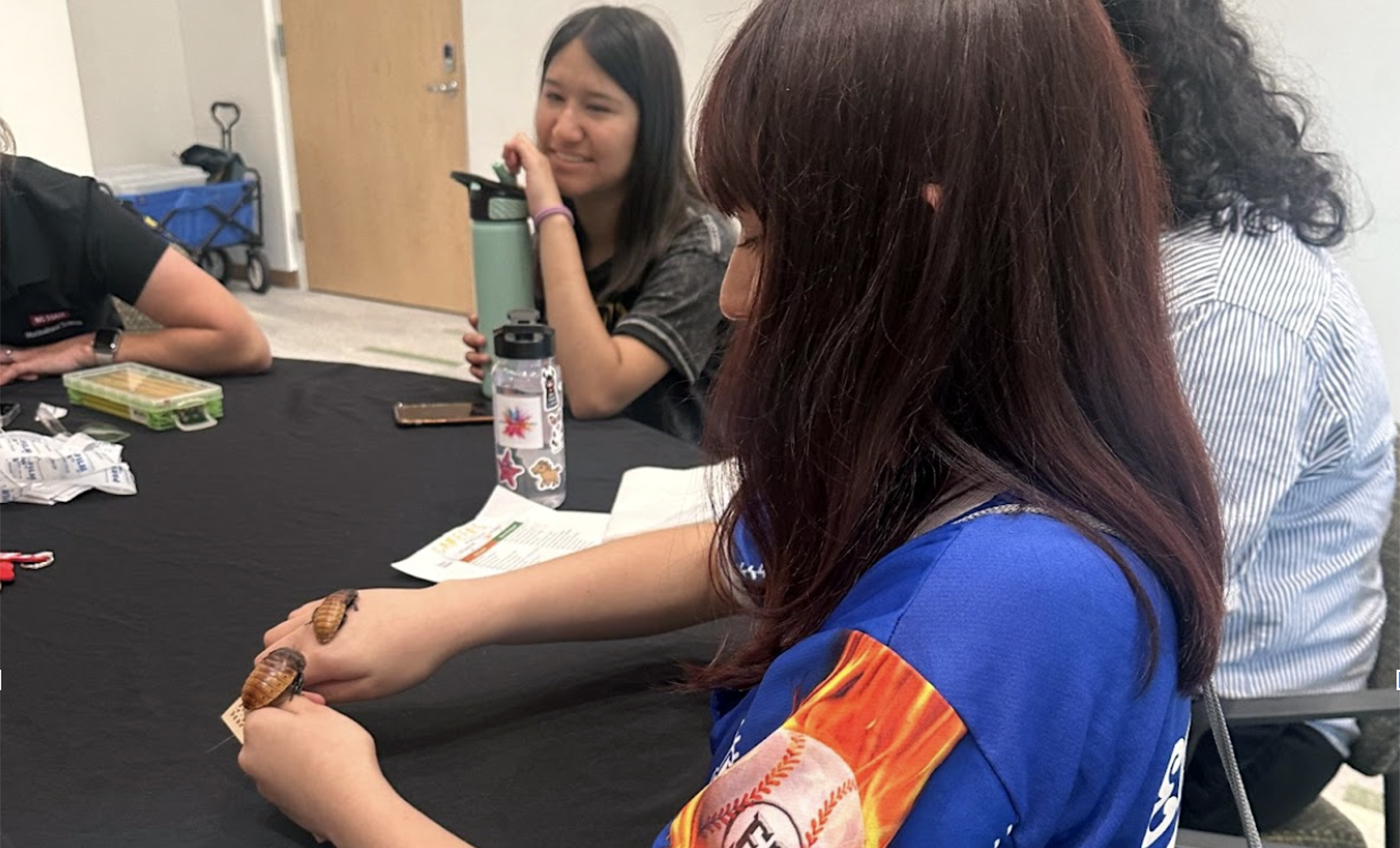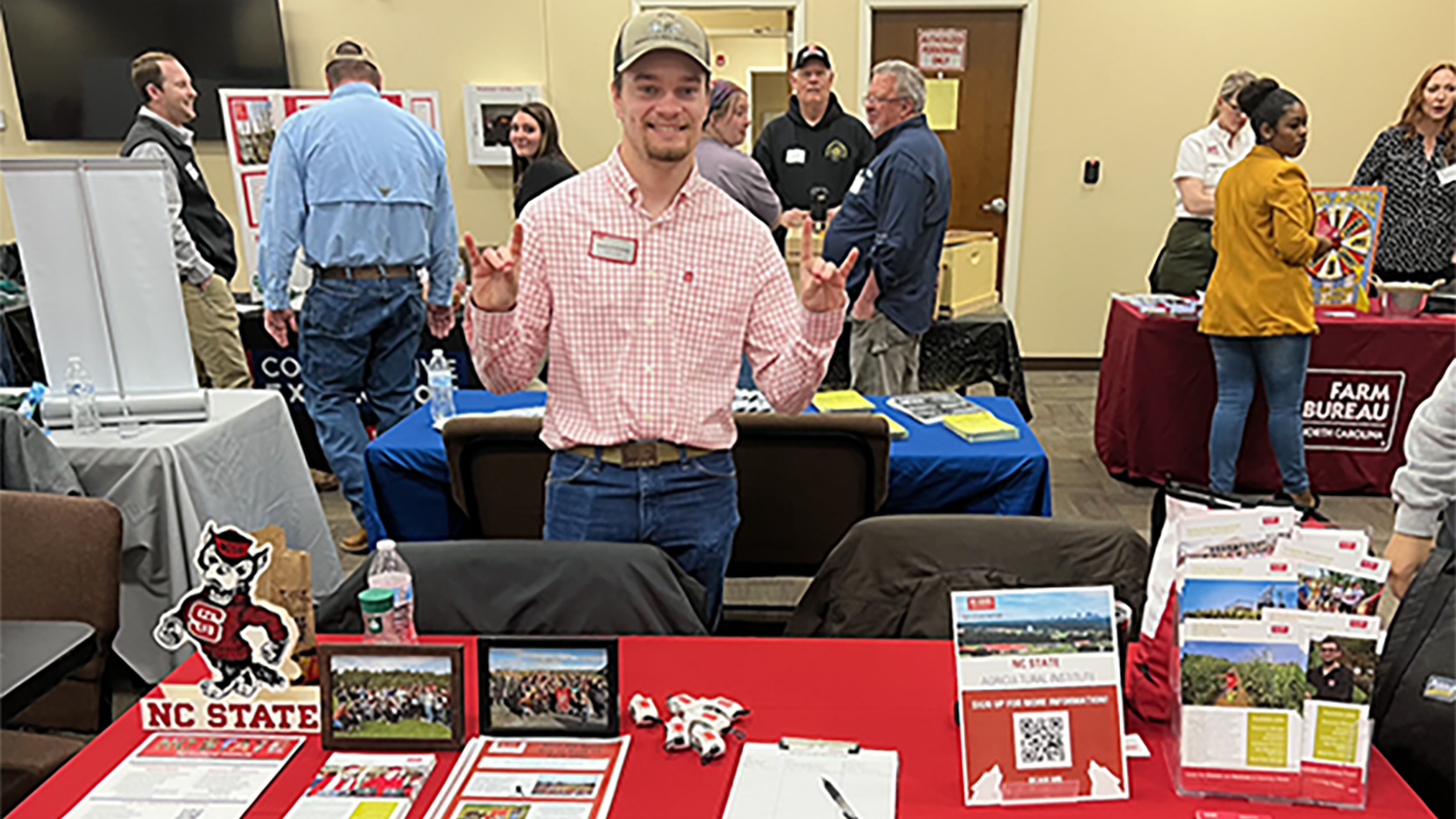Fish Food

It sounds like a fish tale, but NC State University’s Karen O’Connell is betting it’s doable: Optimize the production of microalgae, feed them to brine shrimp, then improve brine shrimp production to feed marketable fish in an economically and environmentally sustainable way.
O’Connell, a National Science Foundation postdoctoral research fellow in NC State’s Department of Plant and Microbial Biology, says that fish farmers around the world would benefit if researchers could find cheaper ways to grow fish. Consumers would also gain an additional source of protein and omega 3 fatty acids.
O’Connell is a former cancer researcher who holds a Ph.D. in genetics from Duke University. She came to NC State two years ago to work with Professor Amy Grunden; O’Connell had attended a presentation where Grunden talked about a microalga known as Dunalellia. O’Connell was hooked.
“Microalgae are super cool, and they make the world spin around,” she says. “They’re where we get most of our oxygen, and they power the oceans. They’re a big thing, and most people don’t even know that.”

To learn more about the one-celled green alga, O’Connell’s been doing complicated taxonomic and genetics work with 74 strains of Dunaliella strains. And along the way, she identified ones that can be grown relatively inexpensively in agricultural waste and seawater.
The microalgae, which thrive in some of the world’s saltiest lakes, are naturally high in beta carotene and omega-3 fatty acids, nutrients key to the diet of brine shrimp (called Artemia by scientists).
In the wild, young prawn, striped bass and tilapia eat brine shrimp, but right now, when they are being raised on fish farms, producers usually feed them pellets made of corn, soybeans, wheat – “and other stuff that fish don’t naturally eat, but they’ll do it if you make the pellets tasty enough,” O’Connell explains.
Pellet-makers usually coat the pellets in oil that comes from lower-value fish, including anchovy and menhaden. Some fishermen catch these fish intentionally for use in fish meal, while others net them as by-catches when they are looking for larger, more valuable fish.
“Overfishing is a big issue,” O’Connell says. “It would be great to find a way to not have to do that.”
[pullquote color=’red’ align=’right’]It’s a natural time to transition to the next phase, and that’s to answer the question, ‘Can we grow fish out of this?’[/pullquote]
O’Connell thinks that brine shrimp could be an ideal replacement for the anchovies and menhaden. The shrimp could be ground up and then used to coat the pellets, making them smell more enticing to larger fish and providing them with omega 3 fatty acids that aren’t in plant-based pellets.
O’Connell’s next step: to explore more efficient and cheaper ways to raise the brine shrimp. While the researcher has nearly completed her fellowship, she’s written a grant proposal for a U.S. Department of Agriculture fellowship that could allow her to conduct research on fish physiology and nutrition with Ben Reading, an NC State aquaculture specialist in the Department of Applied Ecology.
“It’s a natural time to transition to the next phase,” O’Connell says, “and that’s to answer the question ‘Can we grow fish out of this?’”
Our research addresses grand challenges — and overcomes them.
[button]Learn more[/button]
- Categories:


